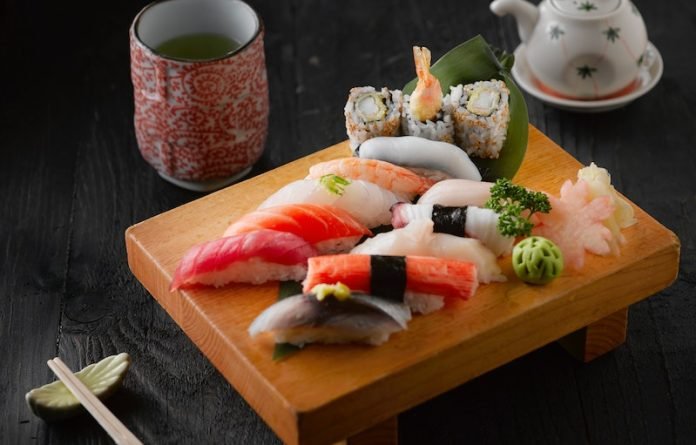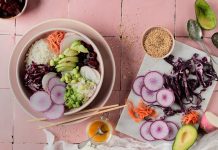
From sushi and sashimi (Japan) to poke bowls (Hawaii) and ceviche (Peru), consumption of raw or undercooked fish and other seafood is becoming increasingly popular.
Appealing as such dishes can be, they can also increase the risk of exposure to fish-borne parasites.
It’s not a matter to take lightly. Every year, almost one in ten people fall ill from eating contaminated food.
The World Health Organisation estimates that some 56 million cases of parasitic infections associated with the consumption of fish products occur annually.
Tiny but troublesome stowaways
Among the fish-borne parasites that can affect humans, there are three major groups of parasitic worms, also known as helminths: flatworms, spiny-headed worms (acanthocephalans) and ciliated worms (nematodes).
Diagnoses of infection with Opisthorchis, a family of flatworms, are the most common, but they occur mainly in East and Southeast Asia.
Of more global concern are those caused by some nematodes of the family Anisakidae, particularly species of the genera Anisakis, Pseudoterranova and Contracaecum.
As a consequence, they’re the focus of much of the world’s medical and economic concern.
The parasitic disease anisakiasis, caused by nematode larvae belonging to the genus Anisakis, is considered the main threat to human health.
Every year and on all continents, countless cases are diagnosed in humans, in part because the rise in consumption of foods such as sushi and sashimi.
In Japan alone, where it is traditional to eat raw fish and seafood dishes, more than 7,000 cases of anisakiasis occur annually.
From marine mammals to human stomachs
Today, anisakiasis is not only an emerging global human health problem, but it is also an economic concern, due to the potential negative effects on consumer confidence and trade associated with infected fish products.
So how can this troublesome disease be avoided? The answer lies in understanding the parasites’ life cycle.
The genus Anisakis comprises nine species, three of which (Anisakis simplex, Anisakis pegreffii and Anisakis physeteris) have been confirmed as zoonotic pathogens.
These nematodes infect a wide range of marine organisms; fish and cephalopods serve as intermediate hosts, while dolphins, whales, seals and other marine mammals are the final hosts.
Adult worms are found in the mucous membrane that lines the stomachs of marine mammals. The parasite’s eggs are expelled along with the animal’s faeces and hatch in seawater.
There, krill – small crustaceans that form the basis of the ocean food chain – eat them and become infected with larval stages of the nematodes.
When the krill are in turn eaten by fish or squid, another stage of larvae infects the predators’ guts and become embedded on the surface of their organs and eventually in their muscles.
And that’s where we humans come in. When we consume fish, squid, octopus or other seafood containing third-stage Anisakis larvae that’s raw or undercooked, we can become accidental hosts to Anisakis larvae.
Once ingested, they settle in our stomach and sometimes the small intestine.
Stomach pain and worse
While the parasite cannot reproduce in humans, it can survive for a short period of time and cause anisakiasis, which can range from mild to severe depending on the person infected.
The most typical symptoms of gastric anisakiasis include abdominal pain, nausea and vomiting within hours of ingesting the larvae.
Other symptoms can include allergic reactions and even anaphylactic shock.
Infection of the small intestine is less common, but when it occurs it can result in an inflammatory mass and symptoms similar to Crohn’s disease, which develops one to two weeks later.
Some workers in the fishing industry as well as cooks and other professionals who regularly deal with fish may suffer from occupational allergic anisakiasis.
Here, ingestion of the parasite’s larvae is not necessary for the disease to occur – those affected become sensitive to Anisakis proteins that come into contact with the skin or respiratory tract.
Thankfully, the overall prognosis for anisakiasis is generally positive. Most infections are self-limiting and usually resolve spontaneously after several weeks. Person-to-person transmission is effectively impossible.
Ceviche, sashimi and even pickled anchovies
More than 90% of anisakiasis cases worldwide are reported in Japan, and most of the remaining 10% in countries such as Spain, Italy, the United States (Hawaii), the Netherlands and Germany.
These are regions where we traditionally eat raw or undercooked fish dishes such as sushi and sashimi, ceviche and carpaccio, pickled or pickled anchovies, Hawaiian-style salmon lomi-lomi and salted herring.
The species that are most frequently parasitised include salmon, tuna, squid, cod, hake, mackerel, mackerel, horse mackerel, blue whiting, sardines and anchovies.
How can anisakiasis be prevented? Preventive measures are essential to control and minimise the disease.
While the worms can resist pickling and smoking, semi-preserves such as anchovies and traditionally salted dried fish such as cod or mojamas involve processes that kill the parasite.
The best approach is to use a traditional cooking technique such as cooking, frying, baking or grilling.
The Spanish Agency for Food Safety and Nutrition reports that when the cooking temperature of a seafood reaches or exceeds 60°C (140 Fahrenheit) for at least one minute, the parasite is killed.
While such methods aren’t an option for fans of sushi, sashimi, and ceviche, freezing is.
When seafood is subjected to -20°C for seven days or -35°C for more than 15 hours, the larvae are destroyed.
If you’re not sure that your freezer can go that low, it’s prudent to buy frozen fish. Indeed, to increase consumer food safety, in some countries, commercially prepared sushi is frozen before being sold.
European legislation requires that seafood not be offered for sale with visible parasites. To avoid anisakiasis, it’s advisable to buy clean and gutted fish and to visually inspect them – even fish fillets merit examination.
There are a few exceptions from the freezing requirement.
Oysters, mussels, clams, and other molluscs; fish from inland waters (rivers, lakes, marshes…) and freshwater fish farms (trout and carp, for example).
Farm-raised fish may also be safe, providing that they were reared from embryos obtained in captivity, fed with feed without zoonotic parasites, and kept in a parasite-free environment.
While there’s much to be aware of, it’s better than suffering the consequences of inattention or inaction. With the correct steps and a measure of precaution, it’s possible to enjoy seafood in a safe and responsible way.
Written by Raúl Rivas González. The Conversation.
If you care about nutrition, please read studies about a breakfast linked to better blood vessel health, and popular weight loss diet linked to heart disease and cancer.
For more information about health, please see recent studies about unhealthy habits that may increase high blood pressure risk, and results showing green tea and coffee could help reduce death risk in diabetes.



